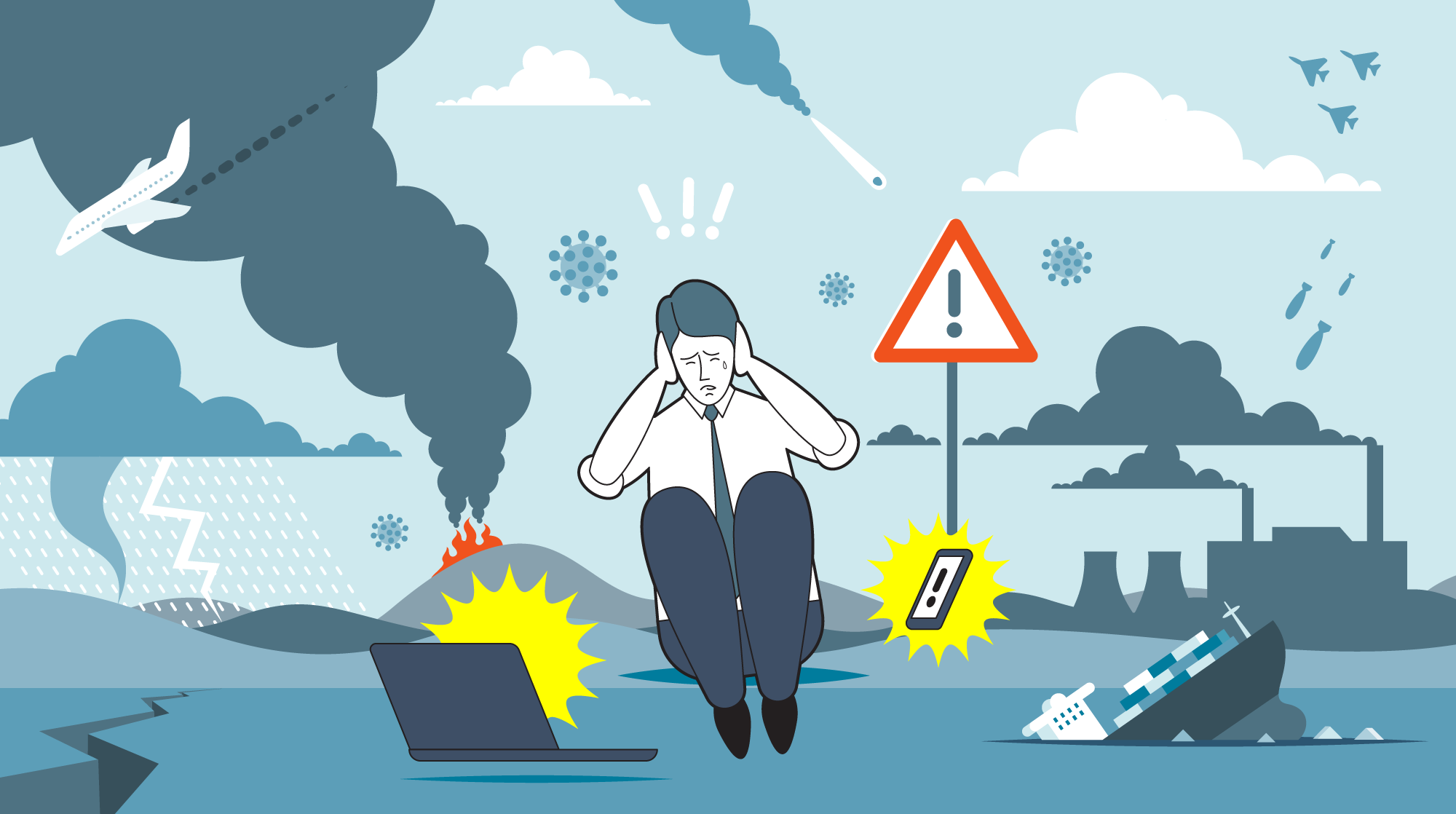Whether it’s collapsing supply chains, social and economic inequality, climate change, or even Corona, conflict and war: unsettling news is reaching us almost daily via countless channels. This often doesn’t leave us entirely unaffected and leaves us thinking: How is the crisis going to affect my life? Should I be afraid of losing my job? Negative news can raise many questions and trigger uncertainties or even fears about the future, both personally and professionally. This is precisely the reason why managers should support their employees in times of crisis by providing them with security and transparency, even in turbulent times. This can be achieved by means of good crisis communication. Unfortunately, what many companies forget is just how important images are in doing this. Find out why in this article!
Admittedly, some crises are of our own making. We all remember the recent diesel crisis in the automotive industry, or the data scandal at Facebook. But sometimes crises hit us completely out of the blue. For instance, who would have predicted a few years ago that a virus could lead to the collective shutdown of an economy? Or that a war in Ukraine would massively disrupt global supply chains almost overnight. Today we all know full well how quickly things can change and that many things we had absolute faith in, prove not to be so certain after all. When such crises occur, despite a well-developed risk management system, crisis communication is indispensable. This is because professional crisis communication creates security for all those affected and for the company.
In times of crisis, it is important to present the current situation openly and realistically to all those affected in the company and to make clear what the (planned) measures for overcoming the crisis are. Only a workforce that feels it is being taken seriously will feel a sense of loyalty to its employer, and thus stand together with them through the crisis. What is more, well-informed staff are key multipliers in a company’s information flow and influence its public perception through dialogue with outsiders.

Unfortunately, there isn’t a “one-size-fits-all” tool for crisis communication that solves all of a company’s communication difficulties in a crisis in one go. This is because a crisis usually affects different groups in a company and these need to be informed in different ways. But there is one tool whose rhetorical potential is often underestimated in crisis communication: the image. As early as the financial crisis of 2008, the researchers Dennis Jancsary, Markus Höllerer and Maria Grafström investigated the effect of images in times of crisis. They came to the conclusion that images make it easier for people to link new situations with firmly established social categories and discourses. In short, images help people in crisis situations to grasp complex ideas more quickly and easily.
Big Pictures are ideal as visual tools in crisis communication, because they support your company in presenting even abstract contexts in a simple and understandable way in times of crisis. Whether in the form of “before and after scenes” or “change maps”, they show your colleagues or other stakeholders in concrete terms how your company is dealing with the situation, what is planned, or what things could look like after the crisis. However, Big Pictures don’t only quickly create transparency and trust through the open communication of planned measures, or the outlining of a positive vision. Above all, their great strength lies in the fact that they appeal to the emotional level. Rather than overloading the viewers with complicated texts, rows of figures or technical data, the crisis contexts and processes are placed in a narrative framework. In this way, the viewers can playfully unlock the meaning behind the Big Picture story for themselves, without losing track of the main message.

Feel free to get in touch with us: We’ll show you how you can use Big Pictures to help visually depict crisis communication and go on to jointly develop powerful images that you can use in your own crisis communication!
